Uncategorized
What is Solana? How SOL is aiming to sovle scaling issues.


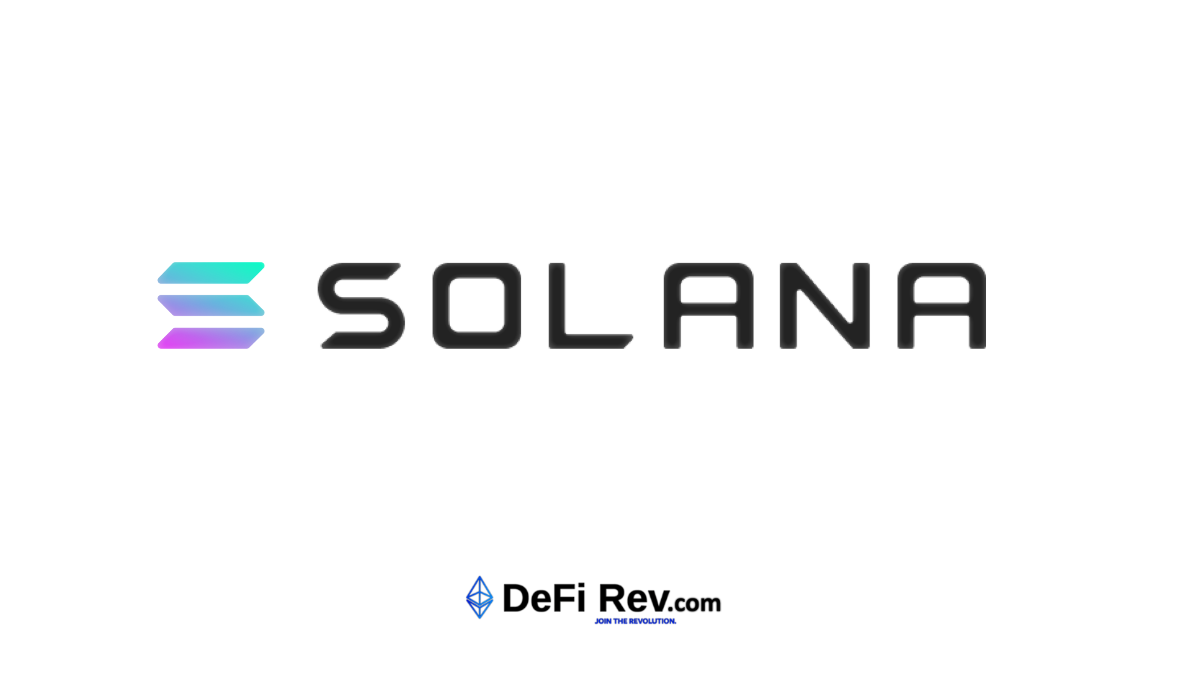

How Solana has solved scalability issues of Blockchain
Decentralized applications need the global exposure it rightly deserves. The current trends show how successful decentralized token platforms have been and Solana is a high-speed single layer blockchain that has been designed to create solutions that will allow decentralized blockchains to become a globalized data system.
Scalability is one of the biggest challenges that Blockchain faces. Solana has solutions for the common problems of blockchain that currently supports a peak capacity of 65k transactions per second and 400ms block times with the help of a timestamp system called Proof-of-History (PoH).
What is Solana?
Solana was founded in 2017 by Antony Yakavenko who was an executive at Qualcomm. He has had a plethora of experience working with different decentralized systems with compression algorithms for DropBox. He then joined hands with Greg Fitzgerald the CTO and Eric Willians to create a trustless protocol that converts into a code the time passage within the data structure allowing for superior scalability.
Solana is a delegated Proof-of-Stake protocol that focuses on providing scalability without giving up on security and decentralization attributes.


SOL Token
Solana has a token called SOL passable to the nodes on the Solana Blockchain to validate its output on an on-chain program.
Circulating Supply16,350,633 SOL (3.35%)
Current Total Supply*488,634,933 SOL
Initial Total Supply500,000,000 SOL
Key features
Proof of History
The biggest challenge that distributed networks face is to find a common ground on time and sequence in which events occur. As a part of the system, all validators are required to solve SHA256-based Verifiable Delay functions (VDF). By default, VDF requires a fixed number of steps to analyze but produces an output that can be publicly verified.
Its unique Decentralized timeline system called Proof of History or PoH is built in order to solve the issue of time in distributed networks that does not have a single source of time. PoH uses Verifiable Delay functions that allow every single node to generate timestamps with SHA256 computations. The mechanisms call for holistic growth and high-frequency blockchain applications in order to free the global financial system.
TowerBFT integration
PoH allows the user to compute the node scenarios with only a fraction of the messaging overhead of a majority of the PoS systems. They work with Solana’s version of PBFT or Practical Byzantine Fault Tolerance as the network’s time-keeper letting the protocol encode vote lockouts in the ledger if any so that validators do not vote on two different forks at the same time. If any such thing is detected the validator will be penalized by the slashing of his stakes.
Turbine
The time required to promote all blockchain data to all the nodes can be the biggest roadblock to achieve scalability. The lack of bandwidth could be the reason behind this. Solana proposes that a solution to this would be disintegration of data into packets with smaller amounts of bandwidth. Turbines are that feature that leverages the network to transport data in bits for more impact.
Gulfstream
For every single block production process, the network leaders will also be decided based on their individual stakes. The validators as well as the clients can forward transactions to the leader much ahead of time allowing validators to execute the transactions ahead of time, rapidly switch leaders, and also reduce confirmation times.


Cloud break
Poor memory size in a distributed system works as the biggest roadblock to a good performance. Cloudbreak as a feature was designed to optimize the ongoing reads and writes across RAID 0 configuration of SSDs.Additional disks add to the storage capacity of on-chain programs with the increase in concurrent reads and programs written when execution takes place.
Conclusion
Solana is the future because its solutions target scalability for blockchain systems. It has also addressed some of the biggest issues that decentralized platforms face. It has removed sharding from its infrastructure which has contributed towards faster validation and more security also.
Currently, Solano operates on a non-linear architecture which undoubtedly is better than linear blockchains and could command the future. Proof of History is surely an interesting way to remove the time-issue from the blockchain. Solana’s solutions may be destined for a global time standard for blockchain operations.


Uncategorized
Litecoin MimbleWimble Update -Privacy upgrade to push fungibility with Mimblewimble on Extension Blocks


Litecoin MimbleWimble Update
Litecoin for some time has been creating noise about assuaging the risks associated with the transparent ledger system in Blockchain technology. With the upkeep of a transparent ledger, Blockchain provides a medium through which all the transactions can be viewed because the mechanism supports it. Keeping that in mind Litecoin has promulgated two new draft Litecoin improvement Proposals that are designed and furnished with details that would improve the privacy features of the noted network.
The authors of the proposal Andrew Yang, David Burkett and Charlie Lee are of the opinion that the transparency has had a drastic impact on the firm’s functional fungibility. In simple words Fungibility is the innate quality of a good or an asset that makes it interchangeable with another good or asset of the same quality.
Charlie Lee, founder of Litecoin had earlier pronounced plans to discover privacy technologies because the scaling issue is behind them. Now a more pressing issue is fungibility and Privacy.


Why should you know this?
Because this is the dilemma that most coins like Litecoin and Bitcoin are facing currently. It is not private because one can see who held what coin in which address in the past. And competition knows this! That said, fungibility faces risk in the long-term. The Litecoin foundation has outlined the proposal from the observation it has made. It had strong reasons to outline the drafts.
It is a possibility that personal information is collected from the respective IP address or exchanges which can be leaked and tied to the addresses which is risky. It has been observed that as and when entities link addresses to distasteful activities the taint metric can be applied. Important organizations including governments have already started blacklisting addresses.
Privacy seems to be one of the biggest priorities when it comes to improving protocol because with greater privacy comes greater functional fungibility. The Litecoin foundation has started working on integrating scalability and privacy-focussed protocol called Mimblewimble which was a tongue-tying curse from the Harry Potter series.
About MimbleWimble
MimbleWimble is a protocol that came into being when an anonymous user in Bitcoin developers chatroom. MimbleWimble transactions are derived from another transaction type called confidential transactions. The confidential transactions lets the senders to encrypt the amount of coins which are to be sent using blinding factors. Blinding factors is nothing but a random value which is used to encrypt the coin amount in the transaction. The user selects the blinding factor which encrypts the amount that is being transacted, so the transactions are clouded but are verifiable therefore substantially increasing privacy.


How will MibleWimble work?
Coming back to the proposals, the authors are looking at implementing Mimblewimble protocol as the opt-in new transaction format through extension blocks’. Extension blocks are soft forks lookalikes but are much more advanced. It appears like a regular base block but there is a major difference. While a base block is cryptographically interlooped with the previous and the next base block chaining these blocks in a chronological manner; each canonical block links to the corresponding extensions block.
These extension blocks function concurrently with the main chain canonical blocks at an average interval of 2.5 minutes. The actual functionality will be to ensure that private transactions occur inside the EB. Users can then use Mimblewimble to move their coins to and from the Extension block through an integrating transaction.
The proposal has without any obfuscation stated the opt-in integration and how it will impact privacy and scalability. The proposal also handles the fusion between Extension blocks, canonical blocks and the coins.


Litecoin MimbleWimble & Extension Blocks are truly Novel
Although the move hints at averting risks, the challenge is unqiue because Extension blocks have never been implemented on a live Blockchain before. It will obviously require time, analysis and audits to ensure there are no issues or bugs. It’s best not to rush such a robust and complictaed overhaul, as there is potential danger to lose coins or inflate the supply.
The Latest Litecoin MimbleWimble Update as of 7/4/20:
Even though this daunting task has proved incredibly complex, the wait will be totally worth it. And good news! In terms of the roadmap, July 2020 is still slated for the initial block download. August is set for chain reorganization logic, and the Activation logic and the launch of the test-net is set for September 2020! This is very exciting news for all Litecoin holders.


The Future of Litecoin
Litecoin has always been a very important cryptocurrency to the space, and as we move into the future, we imagine Litecoin has the potential to be one of the most widely adopted and used cryptocurrencies in terms of mass transactions on a daily basis.
We envision Litecoin having real potential in mastering micropayments in the future of eCommerce. As most individuals choose rather to store and save bitcoin much like a commodity like gold, Litecoin has a real chance of being a cryptocurrency that is actually used as a currency, not a hybridized currency / commodity like bitcoin has become.
Litecoin is the perfect user friendly and corporate friendly cryptocurrency and is incredibly fast and secure. It has our vote!
—The DeFiRev Team
DeFiRev.com is #1 in DeFi News. Check back in soon to find out the latest Litecoin MimbleWimble updates & the latest DeFi News.
Uncategorized
DeFi Oracle Coins are hot hot hot this weekend. Chainlink, BAND, DIA, UMA, and others making major moves.
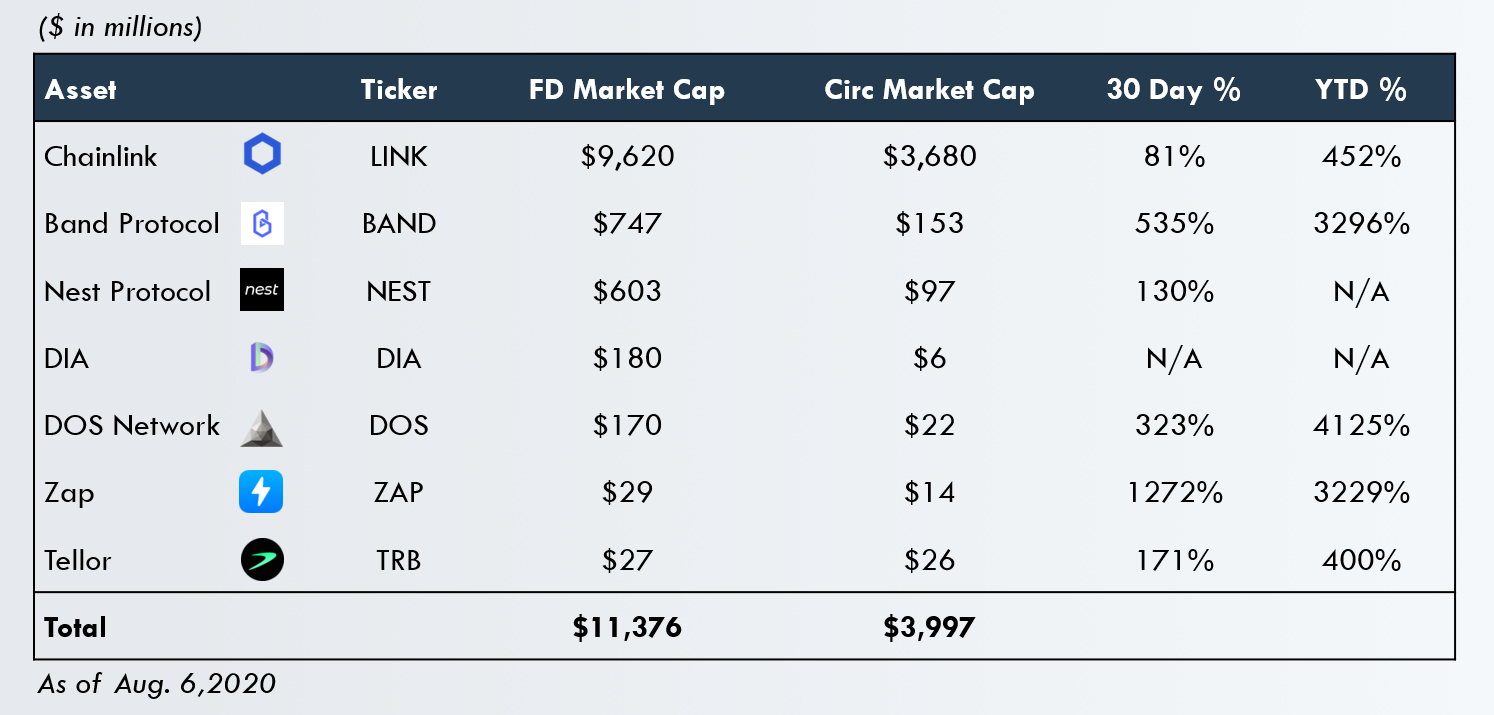

Oracle solutions: a trending disruption in DeFi. Trend Signals major interest among investors and institutions.
Within the space of DeFi is another niche that calls for attention are Oracle tokens that are having a great 2020. Needless to say, DeFi has created the right kind of noise to trigger investment interest in these DeFi Oracles. In this article, we highlight the top-performing DeFi Oracle Coins.
So what exactly are oracles?
Oracles are nothing but services that are developed to integrate with smart contracts offering a mountain of real-time in-depth information on pricing. If the concept of oracle is being understood without any ambiguity its role can solve a major issue of data reliability in trading and several other applications of blockchain technology.
Messari, a known crypto data firm, had reported that amongst the crypto assets, ChainLink (LINK), Band, and Nest are among the highest performing this year. Chainlink and Band are particularly the top performers with maximum employability in different DeFi protocols. Their tokens rank among the most valuable DeFi tokens in another study by CoinGecko:
Top Performing DeFi Oracle Coins / Tokens
LINK


Its open-source API helps the developers to build multi-functional software and web applications to improve the performance in the crypto market. ChainLink has always worked towards increasing the adoption of digital currencies all across the world
- It’s On-chain as well as Off-chain design has been structured so as to help even the novices in the space and experts to invest more.
- The agreement so reached by the traders is kept confidential and the network ensures that there is no fraudulent activity
BAND


The Band Protocol is a decentralized Oracle framework mainly used for blockchain Decentralized apps. The Dapps are administered by Smart Contracts which feed these apps off-chain real-time data from trusted data providers. Band Protocol was backed by Sequoia Capital and Binance.
- The successful adoption of the Band protocol is due to the efforts of a great team from enriching experience who are dedicated to building a framework for decentralized data governance taking advantage of decentralization.
- The protocol prioritizes decentralization. Its internal team is crystal clear that it will not allow one entity to take control over even an iota of data
- Data provided are distributed perfectly because the protocol is community-driven, allowing people to build what they want to.
DIA


Decentralized Information Asset or DIA is an open-source information platform that makes use of crypto-economic incentives to source and validate data. DIA is a Swiss-based non-profit organization that operates with a mission to liberate financial data. The company culture promotes transparency in terms of sourcing data and makes it publicly accessible. DIA utilizes crypto-economic incentives for its stakeholders for data validation.
- Different DeFi platforms like Ampleforth, MakerDAO, etc are exposed to Oracle vulnerability. Their dependency on Price oracles is unquestionable which is where the role of DIA is strong as it has proven its worth in serving the needs of these platforms.
- Entities involved in trading are strongly benefitted in DIA’s open-source and trustworthy data. Its content including crypto data and financial news are backed with reliable sites and other new machinery.
UMA


UMA leverages the use of blockchain technology to encourage universal access with its digital-first approach. Universal Market Access or UMA is a protocol for the creation, maintenance, and settlement of derivatives for underlying assets. It allows users to create smart contract-based meta tokens by which traders can express their market view without the need to hold the tokens.
- Focused primarily on priceless derivatives on Ethereum, the contracts are designed in a manner to ensure collateralization without the need for on-chain price feed.
- Its DVM design ensures that any on-chain oracle can be compromised for a price. But UMA’s DVM is based on a system of economic incentives which ensures that there is no way to corrupt the DVM
TRB

Tellor or TRB are Ethereum-based decentralized oracles that are easily implementable through DeFi Dapps. Its data feeds are reliable as they use staked miners competing through Proof of Work to submit the official value.
- The Oracle is an on-chain data bank where data points are added and in return, the miners are given rewards called Tributes or TRB.
- It ensures a secure and sustainable system by incentivizing miners required for dispute resolution.
Oracles serve as the fundamental components to any stablecoin’s primary functionality which then feeds data to smart contracts in the most reliable and secure manner.
Thanks for reading about DeFi Oracle Coins!
DeFiRev.com is #1 in DeFi News. Check back in soon to find out the latest in DeFi News.
-

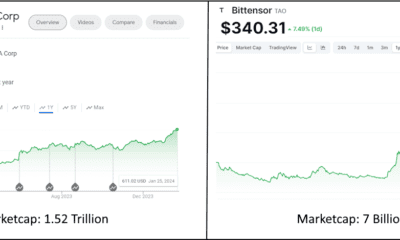

 trading3 months ago
trading3 months agoBittensor booms as Chip Mania hits Stock Market: The AI Race and the Potential of TAO
-

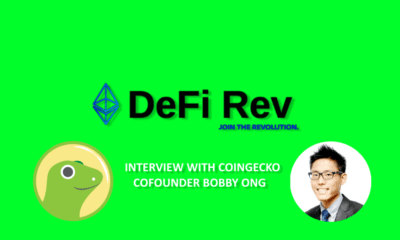

 interviews3 months ago
interviews3 months agoBobby Ong CoinGecko CEO: Interview with the Trailblazing Entrepreneur
-

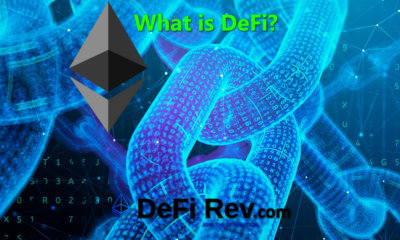

 latestnews3 months ago
latestnews3 months agoWhat is DeFi? Decentralized Finance explained.
-

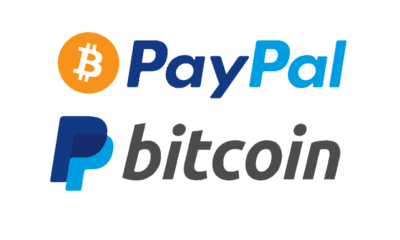

 latestnews3 months ago
latestnews3 months agoPayPal Crypto Bound! PayPal is betting on bitcoin and DeFi in a BIG way.
-

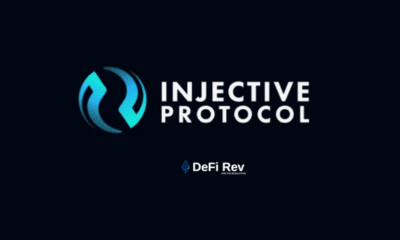

 trading3 months ago
trading3 months agoInjective Protocol, the new Binance IEO, packs a punch
-

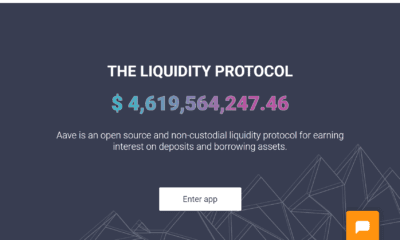

 trading3 months ago
trading3 months agoAAVE CRYPTO ASSET SOARING
-

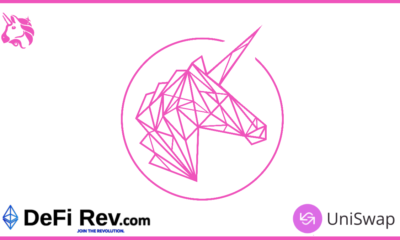

 trading3 months ago
trading3 months agoUniSwap Heating up BIG TIME! Is this the end of IEOs? New DeFi Projects fundraising on Uniswap.
-



 Uncategorized3 months ago
Uncategorized3 months agoLitecoin MimbleWimble Update -Privacy upgrade to push fungibility with Mimblewimble on Extension Blocks